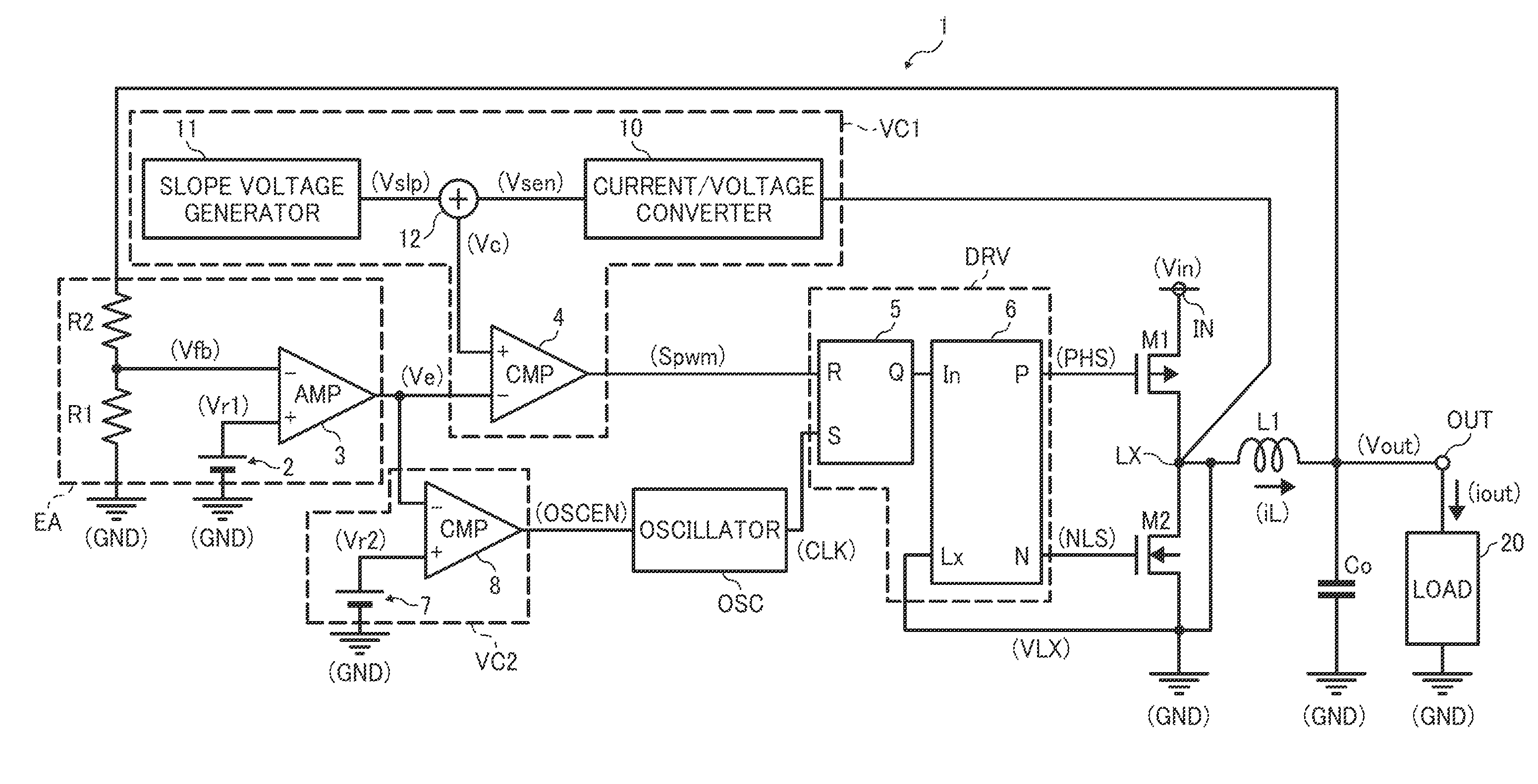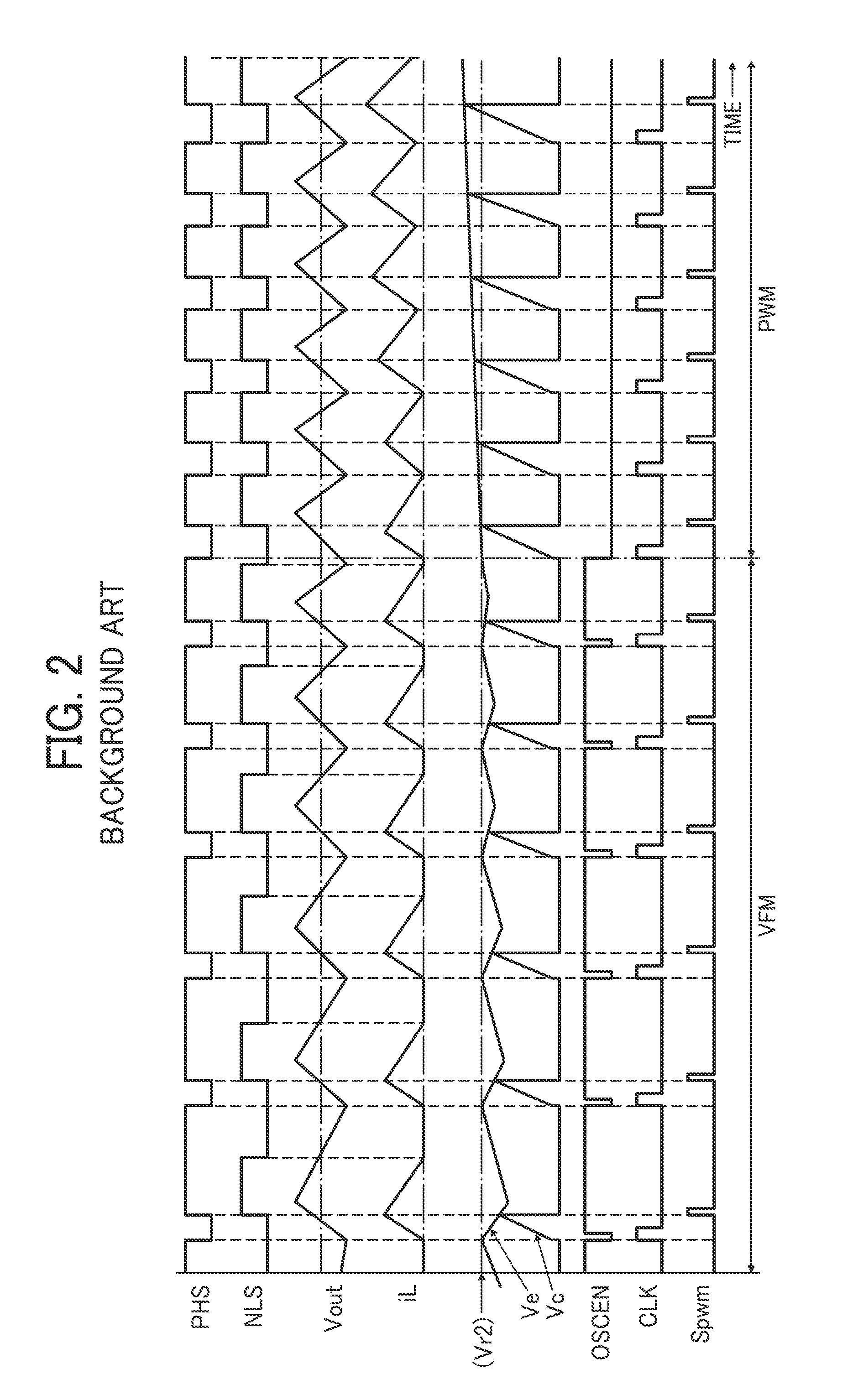Non-isolated current-mode-controlled switching voltage regulator
a voltage regulator and current mode technology, applied in the field of voltage regulators, can solve the problems of noise and ripple in output, inferior vfm control to its counterpart, less efficient pwm control in power consumption,
- Summary
- Abstract
- Description
- Claims
- Application Information
AI Technical Summary
Benefits of technology
Problems solved by technology
Method used
Image
Examples
Embodiment Construction
[0056]In describing exemplary embodiments illustrated in the drawings, specific terminology is employed for the sake of clarity. However, the disclosure of this patent specification is not intended to be limited to the specific terminology so selected, and it is to be understood that each specific element includes all technical equivalents that operate in a similar manner and achieve a similar result.
[0057]Referring now to the drawings, wherein like reference numerals designate identical or corresponding parts throughout the several views, examples and exemplary embodiments of this disclosure are described.
[0058]FIG. 4 is a circuit diagram illustrating a non-isolated current-mode-controlled switching voltage regulator 1 according to one embodiment of this patent specification.
[0059]As shown in FIG. 4, the voltage regulator 1 is configured as a step-down or buck DC-DC converter with synchronous rectification, which converts a voltage Vin input to an input terminal IN to output a cons...
PUM
 Login to View More
Login to View More Abstract
Description
Claims
Application Information
 Login to View More
Login to View More - R&D
- Intellectual Property
- Life Sciences
- Materials
- Tech Scout
- Unparalleled Data Quality
- Higher Quality Content
- 60% Fewer Hallucinations
Browse by: Latest US Patents, China's latest patents, Technical Efficacy Thesaurus, Application Domain, Technology Topic, Popular Technical Reports.
© 2025 PatSnap. All rights reserved.Legal|Privacy policy|Modern Slavery Act Transparency Statement|Sitemap|About US| Contact US: help@patsnap.com



